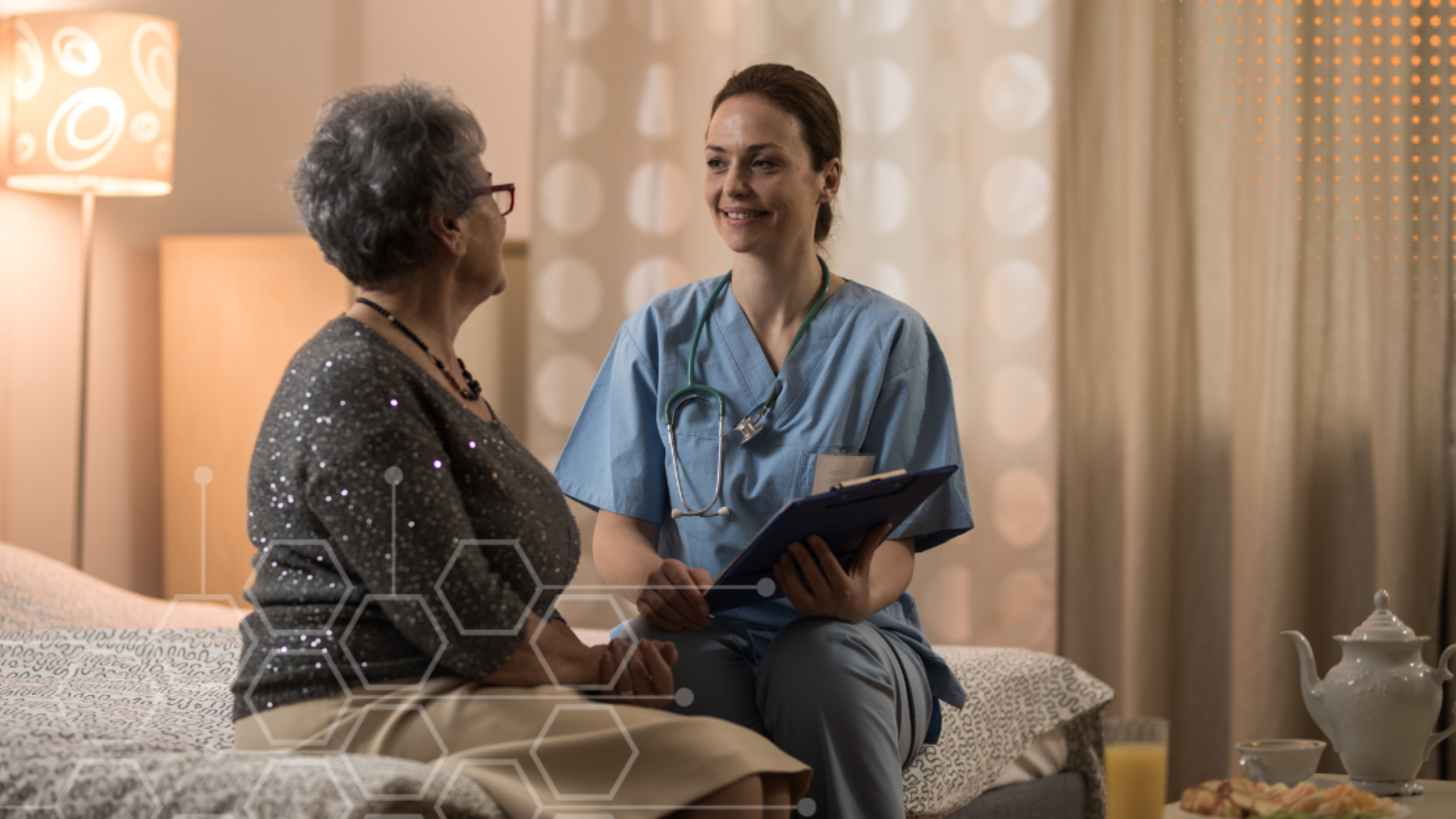
Efficient and effective care delivery of front line staff is paramount to promote consistent and high quality care. With mounting challenges of workforce shortages and increasing patient and resident acuity, the integration of AI-driven and hybrid sensing technology is ushering in a new era of administering care. This innovative approach not only streamlines operations and boosts staff efficiency but also ensures compliance with safety protocols, ultimately leading to better outcomes.
What is AI-Driven Hybrid Sensing Technology
Before delving into the benefits of AI-driven hybrid sensing technology, it’s important to understand what it is. Hybrid sensing technology like AUGi uses a combination of sensors contained in a single device, all powered by AI, to passively monitor resident and patient activity and provide insights at the point of care. Staff are notified in real-time of safety risks and real-time behavioral data helps create a feedback loop that enables assisted living facilities (ALFs) and/or hospitals to enhance their plan of care.
In a recent research, published in the Journal of Informatics NursingⓇ, AUGi was shown to enhance Safety Protocol Compliance by achieving a significant increase in hourly rounding (HR) and bedside shift report (BSR) events by staff throughout the study period. It also highlighted how the technology and platform helped improve staff efficiency, even during the height of the pandemic and its consequent staffing shortages coupled with higher patient acuity.
Here are 3 ways in which AI-driven hybrid sensing technology is revolutionizing healthcare by improving staff efficiency and safety protocol compliance.
1. Improve staff visit and rounding compliance
The healthcare industry continues to face staffing shortages, increased strain on existing resources, and high turnover rates. These challenges often have an impact on aspects of care delivery, including patient or resident rounding. Rounding is in fact included as a best practice for caregivers, and they are trained to purposefully round on assigned patients or residents based on acuity to enhance patient/resident experience and safety. Additionally, bedside shift report (BSR) is an important activity to ensure the proper information of patient and resident behavior is shared from shift to shift to reduce errors in care. AUGi helps facilitate that workflow.
For instance in the published study, the Valley Hospital implemented AUGi initially in a med-surg unit and later expanded to six other hospital units of varying medical needs and acuity. The mobile application reminds staff to check in on patients and residents if enough time has passed without a purposeful rounding event and also provides historical context to notifications and events to aid in patient and resident report handoff.
2. Enhance staff efficiency and workflow
In the midst of staffing shortages and high turnover rates, staff need all possible help to continue to deliver safe and consistent care. AUGi has proven to be a powerful tool for staff. Despite the 2022 Omicron surge that caused a shortage of staff and increasing patient acuity, the Valley Hospital demonstrated that the staff maintained compliance of their safety protocols compared to baseline levels before the surge, enabling staff to do more with less.
The overall clinical workflow improved with the use of the Multi-Live View via AUGi that provided a de-identified view into all patient rooms at the central nurses station. Use of Live View in response to call bell activations and remote bed alarm checks improved patient satisfaction and staff teamwork.
In fact, the de-identified mobile Live View not only protects patient and resident privacy, especially when they are sleeping or resting, but also the staff can institute remote sitter workflows to monitor high risk patients and residents from a central location without needing additional FTEs.
3. Analytics for early intervention and data-driven decision-making
Data is essential to empower clinical and operational workflows, but often difficult to capture, consolidate, and display intuitively for data-driven actions. As a hybrid sensing technology, AUGi captures real-time data of the patient/resident and staff environment, automatically consolidating and aggregating through robust analytics to identify trends and risks.
In the published study, AUGi analytics reports were sent to nursing managers daily that displayed information on patient acuity and resource intensity to aid in staffing assignments and overall plans of care.
Using patient and resident historical data, AUGi analytics displays trends surfacing anomalies and flagging risks for proactive care. As the deployments of AUGi expand, key staffing metrics can be compared across units for a holistic view of the organization, and true operational intelligence.
AI-based hybrid sensing technology is the future of care. It helps enhance patient and resident monitoring, enable early intervention, prevent falls, optimize workflows, automate reporting, reduce caregiver burnout, and facilitate data-driven decision-making – transforming care delivery.
As the healthcare industry continues to evolve, these technologies are poised to play a central role in improving outcomes, enhancing safety, and ensuring that ALFs and hospitals can focus on what matters most – providing high-quality care to those in need. The integration of AI into healthcare represents a promising future where technology and human expertise work hand-in-hand to create a healthier, safer, and more efficient world for patients and residents alike.